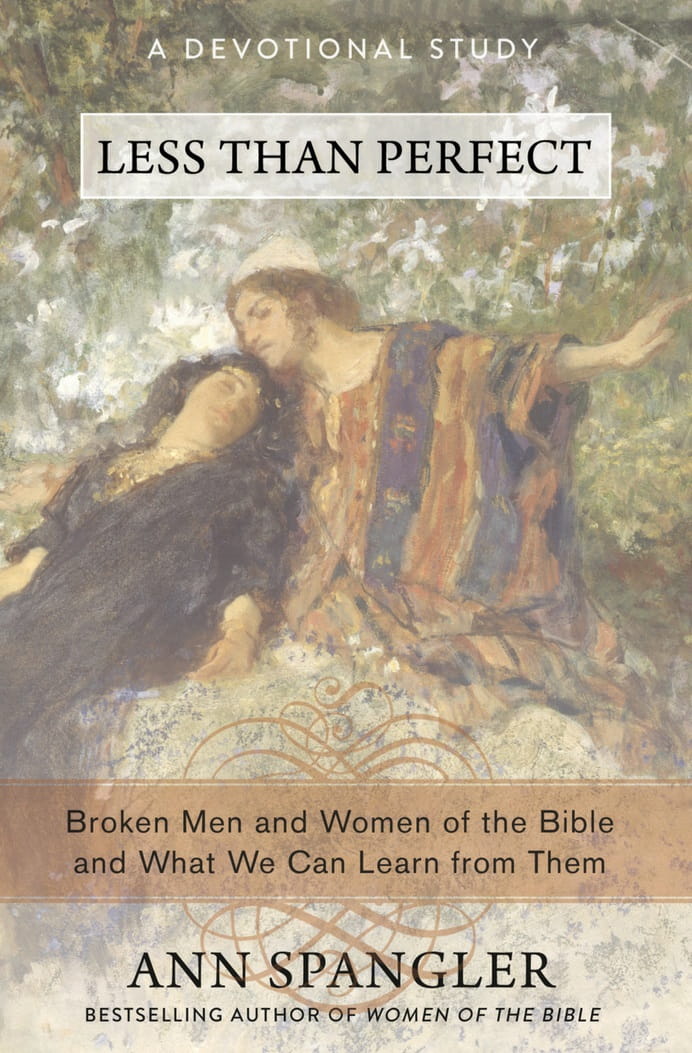Praying the Names of God - June 4
From Praying the Names of Jesus Week Twenty-Five, Day Two
The Name
Without a Redeemer willing and able to pay the high price necessary to liberate us from the power of sin, the story of our lives in this world would be nothing but a story of hopelessness. But because of Christ's redemptive love, we look forward with hope to a day when the world itself will be completely liberated from the power of sin and death.
Until then we can express our faith in Christ by echoing the words of Scripture: "I know that my Redeemer lives and that in the end he will stand upon the earth. And . . . in my flesh I will see God" (Job 19:25-26).
Key Scripture
For even the Son of Man did not come to be served, but to serve, and to give his life as a ransom for many. >Mark 10:45
***
Tuesday
Praying the Name
I know that my Redeemer lives,
and that in the end he will stand upon the earth.
And after my skin has been destroyed,
yet in my flesh I will see God.
Job 19:25-26
Reflect On: Job 19:25-26.
Praise God: For redeeming your life through the blood of his Son.
Offer Thanks: To Jesus Christ who has purchased you for God.
Confess: Any lack of generosity in your life.
Ask God: To help you grow into the likeness of Christ.
Many of us cannot remember a time in which we did not know about Jesus' death on the cross. But some of us may know the story both too well and too little. We have heard it so often that we have been dulled to its drama. With gold crosses that dangle from chains around our necks, we forget that we are wearing a symbol of one of the most painful kinds of death imaginable.
The early Christians had the advantage of being closer to the story.
Some of them could still feel the crush of the crowd, could still see the anguish of the man hanging from the cross. The tragic and wonderful events of that story would never be far from their conscious minds. It was so much a part of them that they could not keep quiet. So the first disciples told the story again and again. They told it not just with words but without words, by the way they lived and by the way they died. You could say they became little versions of the Big Story.
It's the same today. People are still telling the story of Jesus, and some of them are telling it by laying down their lives in imitation of Christ. I have a friend who has the privilege of being related to someone who did exactly that. The name of her relative is Maximilian Kolbe, a Polish priest imprisoned in Auschwitz in 1941. Frequently beaten and abused because of his faith, those who knew him say that he never complained about how he was treated but always prayed for his tormenters and encouraged others to do the same. When his fellow prisoners jostled for a place in the bread line, all of them half-starved, he often stood aside so they would have more to eat. When someone asked whether such self-denial made sense when his own survival was at stake, he answered: "Every man has an aim in life. For most men it is to return home to their wives and families, or to their mothers. For my part, I give my life for the good of all men."
In the summer of 1941, a prisoner escaped from his cell block in Auschwitz. As retaliation, the remaining prisoners in the block were lined up and ten of them were sentenced to death. It would be a slow, excruciating death from thirst and starvation. On hearing his name called, one of the condemned men, Franciszek Gajowniczek, cried out in despair, lamenting the fact that he would never see his wife or children again.
At that moment prisoner number 16670 stepped forward, offering himself as a substitute for Gajowniczek. Joining the nine condemned men, Maximilian Kolbe was led off to an underground bunker where he would eventually die. Bruno Borgowiec, an assistant to the janitor and an interpreter in the bunkers, told how Kolbe led the condemned men in prayer and singing day after day. Bogrowiec could hear their prayers and singing resounding in the corridors of the bunker, so much so that he had the impression he was in church.
One by one the men died off until only Father Kolbe was left. Impatient to reclaim the cell for new victims, the Nazis decided to kill him by injecting him with carbolic acid. Bruno Borgowiec tells of watching Kolbe, with a prayer on his lips, hold out his arm to the executioner.
After excusing himself so he would not have to witness the priest's death, Borgowiec later returned to find Kolbe leaning in a sitting position against the back wall with his eyes open and his head dropping sideways. He described his face as "calm and radiant."
What was it like for Franciszek Gajowniczek, the man whose life was spared? Every year on August 14, the day Kolbe died, he returned to Auschwitz to pay honor to the man who had saved him. A few years after Kolbe's death, he described his feelings about what had happened:
I could only thank him with my eyes. I was stunned and could hardly grasp what was going on. The immensity of it: I, the condemned, am to live and someone else willingly and voluntarily offers his life for me — a stranger. Is this some dream? I was put back into my place without having had time to say anything to Maximilian Kolbe. I was saved. And I owe to him the fact that I could tell you all this. The news quickly spread all round the camp. It was the first and the last time that such an incident happened in the whole history of Auschwitz.
For a long time I felt remorse when I thought of Maximilian. By allowing myself to be saved, I had signed his death warrant. But now, on reflection, I understood that a man like him could not have done otherwise.
Gajowniczek lived to be ninety-five, dying in Poland in 1995.
Another Auschwitz survivor by the name of Jerzy Bielecki declared that Kolbe's death was "a shock filled with hope, bringing new life and strength. . . . It was like a powerful shaft of light in the darkness of the camp."
Maximilian Kolbe, with the love of Christ compelling him, faced great evil and rose above it, lifting other men with him. What he did is a picture of what Jesus has done for us. It's a little version of the Big Story. Of course, Jesus' sacrifice was uniquely effective. He alone is the Redeemer who has purchased us with his own blood, lifting us above evil so that we can be united with God forever.
For more from Ann Spangler, please visit her blogspot on Christianity.com. And be sure to check out Ann's newest books on AnnSpangler.com. To hear more from Ann Spangler, sign up today at annspangler.substack.com.
Meet your spiritual ancestors as they really were: Less Than Perfect: Broken Men and Women of the Bible and What We Can Learn from Them.







